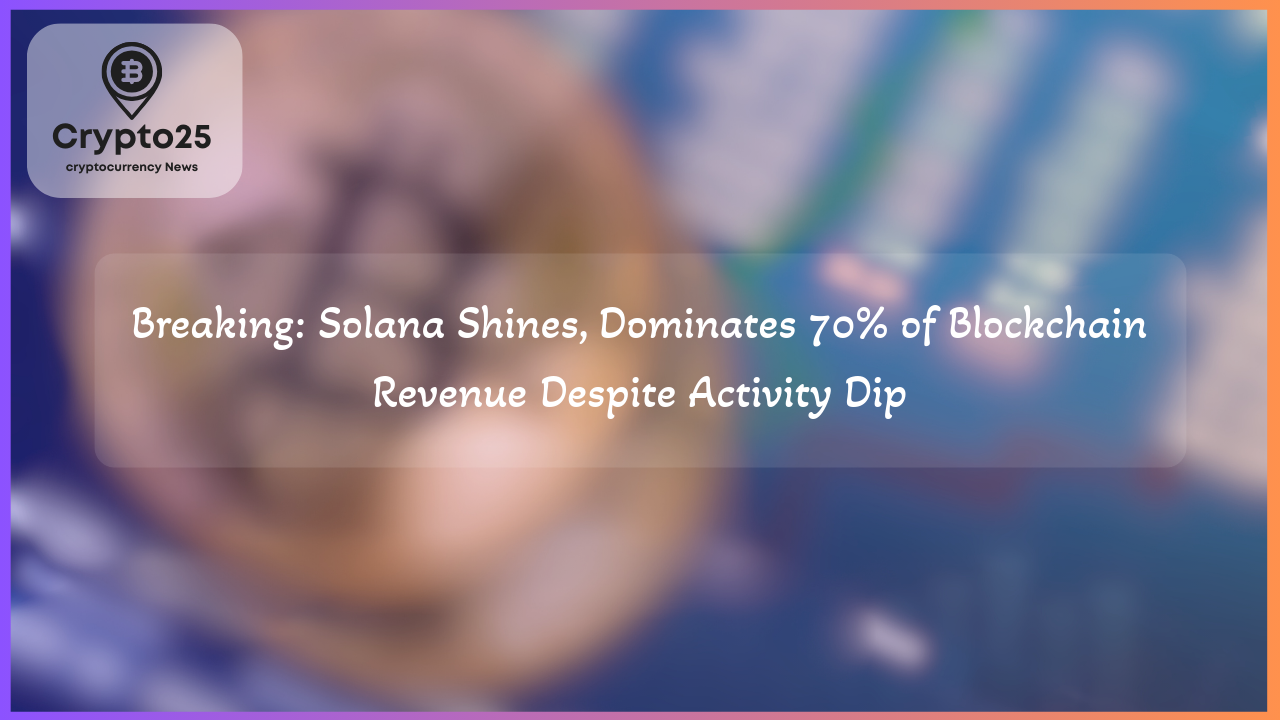
Solana remains a dominant force in blockchain revenue, even as network activity experiences a significant decline. Despite the reduced user engagement, Solana’s decentralized applications (dApps) continue to anchor the network, generating a remarkable percentage of on-chain revenue across the entire ecosystem. However, the future of this blockchain powerhouse may depend heavily on its ability to sustain developer innovation and broaden its application reach.
### Solana Blockchain Revenue Trends in 2024
Solana surprises the crypto market by maintaining its position as a leader in blockchain revenue despite declining user activity. According to Blockworks Research, Solana’s decentralized applications are responsible for over 70% of all on-chain revenue, despite an 80% drop in memecoin-related transactions. This dominance underscores the resilience and utility of the network’s infrastructure in catering to a wide array of blockchain use cases, despite the waning popularity of speculative tokens.
Further corroborating this success, a report from Syndica highlights that in March, Solana-based dApps alone contributed 46% to the total on-chain revenue across all major blockchain networks. These figures position Solana as an integral part of the global blockchain ecosystem in 2024. Nonetheless, its declining transaction fees and shrinking activity raise questions about how the platform can sustain its revenue leadership in the upcoming quarters.
| Title | Details |
|---|---|
| Market Cap | $1.2 Trillion |
### Declining Network Activity and Its Impact on Solana Revenue
While Solana continues to outperform competitors in generating revenue, its total network earnings have dropped significantly this year. Compared to the peak levels of January, Solana’s revenue has plunged by over 90%, now reflecting levels last seen in mid-2024. Transaction fees, a crucial metric for blockchain activity, are at an all-time low. Recent data from DeFiLlama reveals that Solana now collects less than $5 million in weekly fees, marking its weakest performance since September 2023.
The collapse of several high-profile memecoins, including LIBRA, has played a pivotal role in this downturn. Memecoins like LIBRA once fueled a frenzy of activity on the Solana blockchain. However, their speculative nature and subsequent collapse caused a dramatic reduction in transactions, leaving a substantial void in the network’s revenue streams. This drop demonstrates the risk of overreliance on hype-driven assets and highlights the need for consistent, sustainable use cases to stabilize Solana’s financial performance.
### What’s Next for Solana in the Blockchain Ecosystem?
As Solana grapples with declining activity, its future growth may rely heavily on its ability to foster innovation and attract developers to build novel blockchain applications. While the network’s reduced transaction fees suggest a slowdown, they also create an opportunity for affordable, scalable solutions that could appeal to emerging markets. New use cases focusing on Web3, decentralized finance (DeFi), and non-fungible tokens (NFTs) could drive renewed engagement across diverse demographics.
The blockchain landscape is also evolving, with competition intensifying among networks like Ethereum and Binance Smart Chain. Solana’s ability to remain competitive will depend on how effectively it addresses scalability challenges, incentivizes developers, and enhances user experiences. Improvement in these areas could ensure that Solana stays relevant, even in the face of fluctuating market dynamics.
As the blockchain space moves toward sustainable innovation, Solana has a chance to redefine its narrative. By capitalizing on its strengths and addressing existing challenges, the network could reinforce its position as a go-to solution for developers and businesses seeking robust decentralized platforms. Time will tell if the blockchain giant can rise above its current obstacles to continue leading in the highly competitive crypto market.
